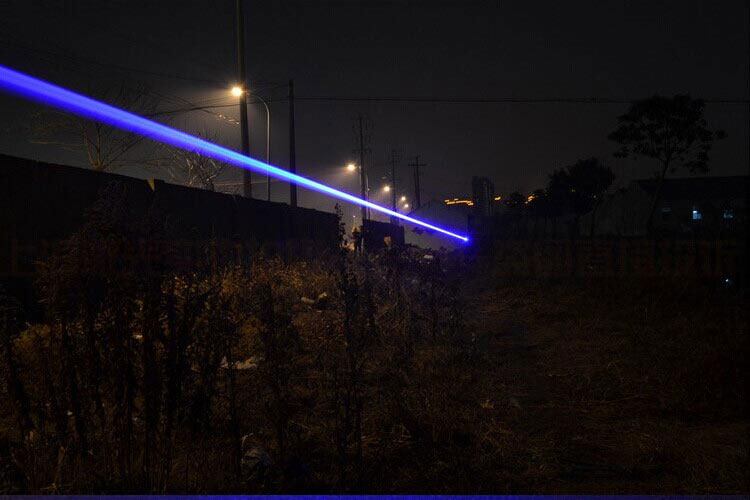Glass Laser Engraving
[PR]上記の広告は3ヶ月以上新規記事投稿のないブログに表示されています。新しい記事を書く事で広告が消えます。
コメント
ただいまコメントを受けつけておりません。
Glass Laser Engraving
The glass is easily broken during the engraving process, so the glass engraving must be very careful. For different types of glass, lead content is different, its engraving methods are not the same. With the increase in lead content, glass hardness, high temperature viscosity and so on, the glass is also more easily broken. Ordinary glass is usually easier to carve than crystal glass, because the crystal glass lead content is high, hardness viscosity decreases, increasing the difficulty of brightest laser pointer engraving. Glass laser engraving process: When the laser beam touches the glass surface, the glass surface heats up, the glass molecules fly. If the glass can not be cooled down, the heat generated by the potholes will be bigger and bigger, the final carving effect will be as bad as mud.
At present, there are many kinds of laser technology for glass cutting, and these technologies are implemented in a variety of ways. However, the main advantages of all these glass laser cutting techniques are similar. First, all laser cutting methods use non-contact machining, which greatly avoids the problem of fine cracks and debris. In addition, the residual stress left by the blue laser pointer cutting method in the glass is very small (the residual stresses of the different cutting methods are different), and thus the cutting edges are of higher strength. This is very important, if the residual stress is too large, then even in the center of the glass force, often also lead to the edge of the glass rupture. Therefore, compared with the use of mechanical cutting glass, laser cutting glass can withstand the force to one to two times larger.
Laser cutting can also reduce the number of process steps due to the need for (or no) the need for subsequent cleaning or grinding stages. Thus, although the cost of capital for laser cutting workstations is higher than that of mechanical systems, the total investment in laser cutting is lower than that of mechanical processing systems because no additional grinders are required. Due to the reduced demand for post-processing and cleaning work, the best burning laser pointer cutting method is more environmentally friendly than the mechanical method and consumes less water (or does not require water at all). Finally, some laser cutting methods support glass curve cutting. Today, the demand for curve cutting is growing, especially in the cell phone manufacturing industry, manufacturers want to produce more complex geometric shapes of the screen, including punching material to accommodate buttons, control keys, LED and camera lens.
CO2 and CO laser source processing glass are in the principle of local intensive heating. Specifically, all the glass is easily absorbed by the CO2 laser at a wavelength of 10.6 microns, so the focused laser beam can quickly heat the glass surface or near surface area. In order to achieve the cutting effect, the glass needs to be translated relative to the laser beam and the glass is rapidly cooled by the spray or jet above the glass. The resulting thermal shock causes the glass to form a continuous slit. If the glass is thinner, the slit can penetrate the substrate completely, thus completing the cutting directly, which is called "overall cutting". If the glass is thick, then you need an additional laser or mechanical breaking link to complete the cut, called "laser scribing."
The overall processing of the CO 1000mw laser pointer is roughly the same as above. However, the glass to the CO laser output 5 micron to 6 micron laser absorption rate is significantly reduced, which makes the laser irradiation of large pieces of material can penetrate deeper. Therefore, the heat can be directly into the large pieces of glass, without having to rely on the surface from the spread. Tests conducted by related companies show that this can further reduce the residual stress than using CO2 lasers, thereby increasing the strength of the cut workpiece while allowing the manufacturer to expand the processing interval. There is also an attractive advantage for CO lasers to support curve cutting. CO2 lasers are often confined to cutting the glass in a straight line because the circular output beam must be remodeled into slender light in order to better diffuse the high temperature produced on the surface. In contrast, the low absorption rate of CO lasers allows it to use circular beams directly without adverse thermal effects. In addition, CO lasers also support cutting chemical tempered glass.
The laser ablation of the glass processing mechanism is completely different from the CO2 and CO lasers that form slits by thermal shock. Laser ablation The way to achieve scribing is to actually remove the material by precision ablation. Abnormalization is achieved when a sufficiently large 300mw laser pointer is applied to excite the nonlinear absorption in the glass. In this way, the material can be removed by local intensive heating (hot ablation) or by direct destruction of interatomic chemical bonds (light ablation) through extremely high peak power.

